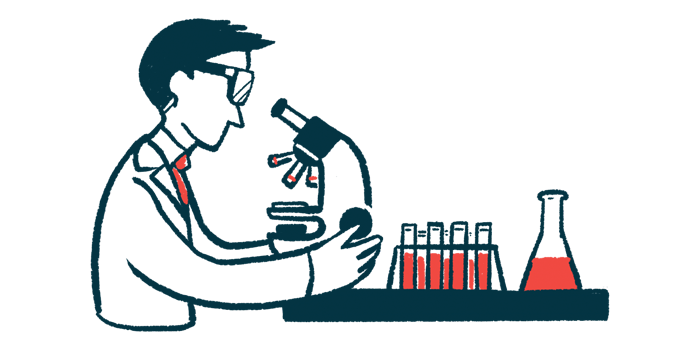New strategy targets the ‘mesh’ around tumors to stop glioblastoma
Altering key molecule in extracellular matrix can prevent cancer spread: Study
Written by |

Researchers may have found a way to halt the spread of aggressive brain tumors by targeting the environment around the cancer cells. A new study shows that altering a key molecule in the extracellular matrix — the structural mesh that holds cells in place — can prevent glioma cells from invading other tissues.
“Nobody has ever tried to change cancer outcomes by changing the matrix around the tumour. This is the first example where a matrix-based therapy could be used to reprogram cancer cells,” Melinda Duer, PhD, co-author of the study at the University of Cambridge in the U.K., said in a university news story.
The study, “Molecular flexibility of hyaluronic acid has a profound effect on invasion of cancer cells,” was published in Royal Society Open Science.
The challenge of treating glioblastoma
Gliomas are tumors that develop when glial cells, support cells in the brain, grow out of control. One of the most aggressive forms of glioma is known as glioblastoma. As in other aggressive cancers, glioblastoma cells tend to grow and spread into other body tissues, making the disease much harder to treat.
In this study, scientists examined the function of an extracellular matrix molecule called high-molecular-weight hyaluronic acid (HMW-HA). “In gliomas, [hyaluronic acid] concentration is even higher than in normal brain tissue and so is a major component of the tumour microenvironment,” the researchers wrote.
Previous studies have suggested that HMW-HA may reduce the growth and formation of brain tumors. During their experiments, the researchers noticed that high concentrations of HMW-HA blocked the spread of cancer cells in lab models. However, when they treated cells with very low concentrations of HMW-HA, the cells began to spread more aggressively, the opposite effect of what was observed at high concentrations.
The researchers conducted molecular tests to figure out this seemingly contradictory finding. They found that, at low concentrations, HMW-HA can stick to a cancer cell receptor called CD44, activating the receptor and prompting the cancer cells to spread. However, HMW-HA is only able to stick to CD44 at low concentrations because the matrix molecule needs to be flexible to fit snugly into the creases and crevices of the cellular receptor. When HMW-HA concentrations are too high, the molecule loses flexibility, so it can no longer activate CD44.
“Our results collectively suggest that the important parameter for [HMW-HA] in cancer progression is its molecular flexibility for binding to CD44,” the researchers wrote.
New approach to halting cancer
Based on these observations, the researchers hypothesized that a less-flexible, low-concentration HMW-HA would prevent cancer cell spreading — a hypothesis that their experiments confirmed.
“Fundamentally, hyaluronic acid molecules need to be flexible to bind to cancer cell receptors. If you can stop hyaluronic acid being flexible, you can stop cancer cells from spreading,” Duer said. “The remarkable thing is that we didn’t have to kill the cells — we simply changed their environment, and they gave up trying to escape and invade neighboring tissue.”
This novel strategy of targeting extracellular matrix molecules to go after cancer could have implications for treating glioblastoma and many other forms of cancer as well, according to Duer. The scientists now hope to run additional tests in animal models with an eye toward developing a treatment candidate that could be brought to clinical testing.
“This could be a real opportunity to slow glioblastoma progression. And because our approach doesn’t require drugs to enter every single cancer cell, it could in principle work for many solid tumours where the surrounding matrix drives invasion,” Duer said. “Cancer cells behave the way they do in part because of their environment. If you change their environment, you can change the cells.”







